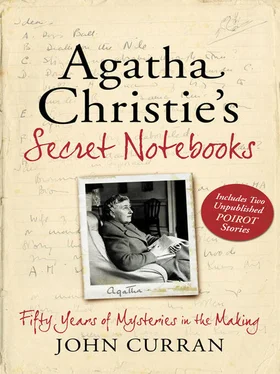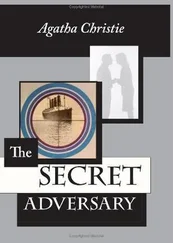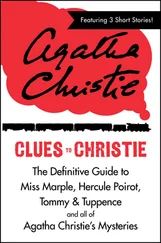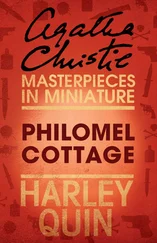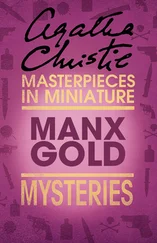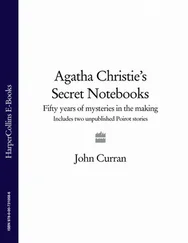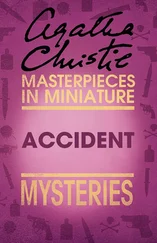Crooked House
Crippled soldier—with scarred face—old man is treating him for war wounds—but not war wounds—really a murderer
Plans Sept. 1947
Crooked House (The Alt[erations]). Done
It is not possible to date the first entry as this ‘crippled soldier’ scenario does not appear in any Christie title, but the next, on the following page, is headed unambiguously, showing that the bulk of the novel, if not the entire novel, was completed by this date with only the alterations to attend to. As we saw in Chapter 3, the crossing out of words is Christie’s usual indication that something has been completed; here, in the same ink, we have the word ‘Done’ added.
Two pages later the plotting begins. The family is set out in some detail, as is the Sophia/Charles set-up:
Old Aristide Kriston—Gnome but attractive—vitality—a restaurant keeper—then marries the daughter of a fox hunting squire—good looks—very fair and English.
Roger—Greek—clever—devoted to father
Clemency—woman scientist
Leo—fair handsome [possibly a forerunner of Philip]
Penelope—good humoured—motivated [possibly a forerunner of Magda]
Sophia
His second wife—Dorcas (Tabitha) [Brenda]
Laurence—the crippled tutor
[Told in] First person—Charles(?) in Foreign office—Sophia Alexander is in his department—her talk—attraction—Oh, we all live together in a little crooked house—he looks up nursery rhyme—sees her in London—or arranges so to do—murder of Grandfather. She refuses to marry him—because of murder—because I don’t know which of us did it?—anyone of us might. His father is A.C. [Assistant Commissioner]—Charles goes into it all—the old man—his marriage
There is a succinct, initial assertion on the second page of notes that ‘Harriet kills the old man’. However, consideration is subsequently given to five other characters—Brenda, the second wife; Clemency, Roger’s wife; the tutor Laurence; the formidable Edith de Haviland, Aristide’s sister-in-law; and Sophia—before eventually returning to the child-as-murderer ploy. The idea ‘Laurence—really no legs’ is not pursued, despite Christie’s fascination with this as a plot device (see ‘The House of Dreams’, page 303), and Laurence remains crippled only in the emotional sense. And although the killer was eventually named Josephine, this name does not appear until the thirteenth page of notes. She is earlier (as above) referred to as Harriet and/or Emma:
Dorcas—No [Brenda]
Clemency? Yes her motive—Fanatical—slightly mad
Or shall it be Clemency—No gain—they will be out on the world
Does Laurence do it—a cripple—Laurence—really no legs—therefore always different heights
Edith—Yes—possible
Sophia Possible Lack of moral fibre
Christie explores this idea further, although it is possible to infer—‘Yes—interesting’ in the first extract and ‘(if J)’, five pages later, in the second—that at this stage she had not definitely settled on Josephine (as she has now become) as the killer:
Emma [Josephine]—Yes—interesting—not normal—wants power—hated her grandfather for something particular—(wouldn’t let her do ballet dancing and you must start young?): Motive—adjust for her method—an abnormally high intelligence. If so is there a second murder—Yes—the old nurse (if Emma)
The weight over the door (if J) or definitely dies—little black book nursery.
Child’s ending—best evidence there is—no good in court—children don’t like being asked direct questions—to you she was showing off.
Charles and Josephine—asks about letters—I was making it up—won’t tell you—you shouldn’t have told police.
Josephine writing in her book. A.C. says—be careful of the child—there’s a poisoner about
Although there is no mention of Josephine in the early pages, when she is mentioned she is given a page to herself and her detective work. Throughout the novel we are told of her ghoulish curiosity, her eavesdropping, her knowledge of detective fiction, and, poignantly, her little black book containing, supposedly, her detective notes:
Does Harriet know that Uncle Roger has been doing this?
An odious child who always knows what’s going on
Josephine—the ghoul—she knows—I’ve been doing detective work
Finds Roger was going away—because I think because he’d embezzled money
And Edith hates Brenda—they wrote to each other—I know where they kept the letters
I didn’t like grandfather—ballet—dancing nono.
Although it is an important Christie title, due to its shocking denouement, Crooked House is not a formally clued detective story. The answer is very evident in retrospect—Josephine’s confident claim of her knowledge of the killer, her lack of fear, the dents on the wash-house floor from the experiments with the marble door-stop—but it is not possible to arrive at the solution by logical deduction. Despite this, the novel shows that even after a 30-year career Christie still retains her ability to surprise and entertain.
A Pocket Full of Rye 9 November 1953
Rex Fortescue is poisoned in his counting house; his wife is poisoned during afternoon tea of bread and honey; and the maid is strangled while hanging out the clothes. A macabre interpretation of the nursery rhyme brings Miss Marple to Yewtree Lodge to investigate the presence of blackbirds.
The notes for this novel are contained in five Notebooks, the bulk of them in Notebook 53, with shorter references in the other four. It would seem from internal evidence that this plot was simmering for some time before Christie refined it for the novel. A Pocket Full of Rye first appeared in October as a serial in the Daily Express. The official reader’s report from Collins, dated April 1953, describes it as ‘highly readable, exciting, baffling and intelligent; it is plotted and handled with a skill that makes most current detective fiction look like the work of clumsy amateurs’. Although he considered the means of the first murder too far-fetched, overall he rated it as a ‘good’ Christie, which seems a little lukewarm after such an effusive description.
The following cryptic reference in Notebook 56 gives the genesis of the plot, the first story, ‘The Tuesday Night Club’, of The Thirteen Problems, which had appeared 25 years earlier in December 1927:
General pattern like hundreds and thousands
Here, a housemaid, at the behest of her married lover, sprinkles ‘hundreds and thousands’ (the coloured sugar confection used mainly to decorate the top of trifles and small sponge cakes) liberally doped with arsenic over a dessert in order to eliminate an inconvenient wife. As if to clinch the matter, the maid in both short story and novel is called Gladys.
As can be seen from the following note in Notebook 14, the plots of A Pocket Full of Rye and They Do It with Mirrors were intertwined in the early stages of plotting (this note would seem to date from the late 1940s as it appears with notes for Crooked House ):
Mirrors
Percival and Lancelot brothers—P good boy—L bad lad—violent antagonism between them—actually they get together to put Father out of the way and his young wife? The trick—P and L fake quarrel—overheard below (actually P. does it above) L. returns and stuns him—calls for help
The faked quarrel became the main plot device of They Do It with Mirrors while the brothers Lancelot and Percival remained with A Pocket Full of Rye.
A few pages later Christie sketches a plot:
The King was in his Counting House
Pompous magnate dead in (a) Office (b) Suburban house—Blackbirds Mine
Читать дальше
Конец ознакомительного отрывка
Купить книгу
